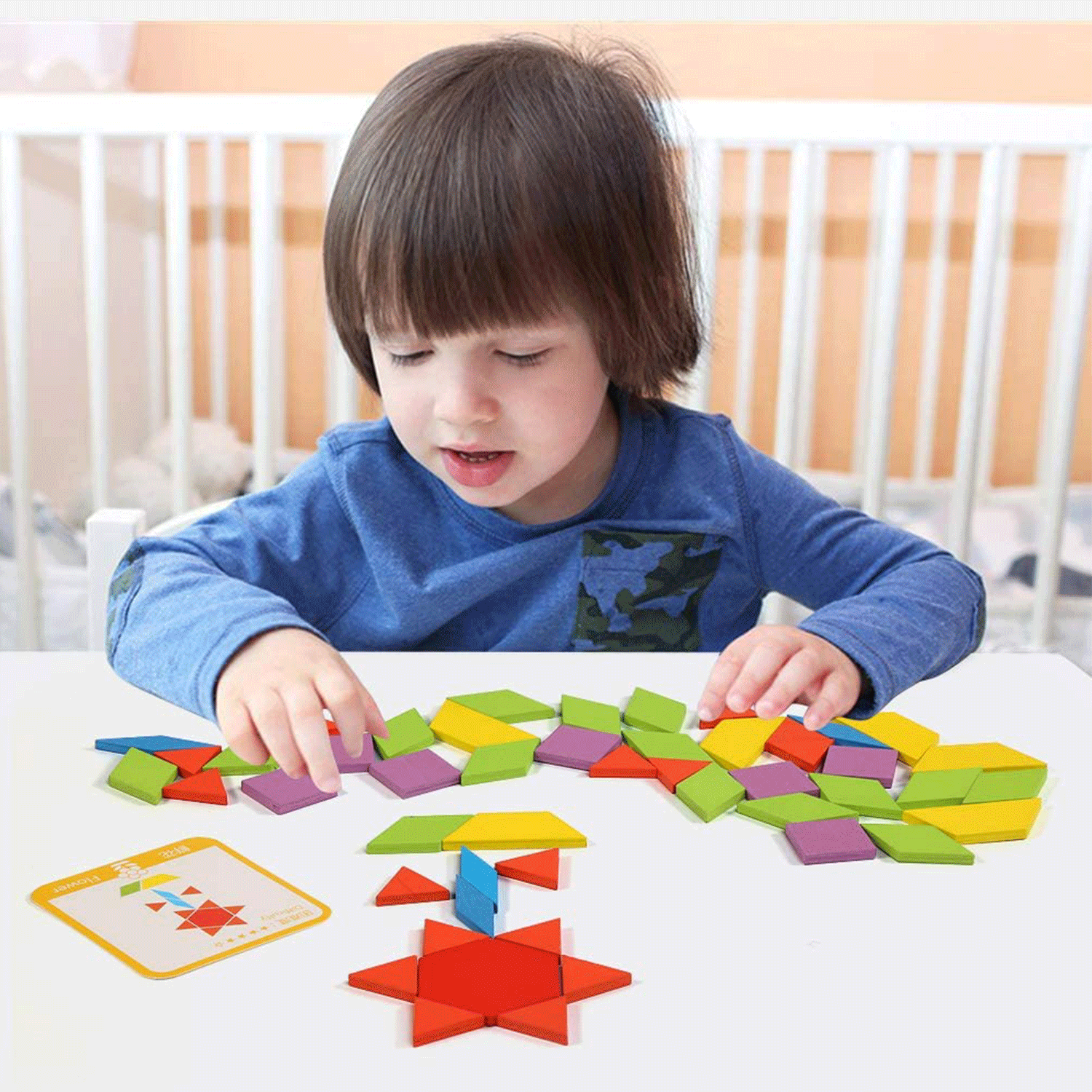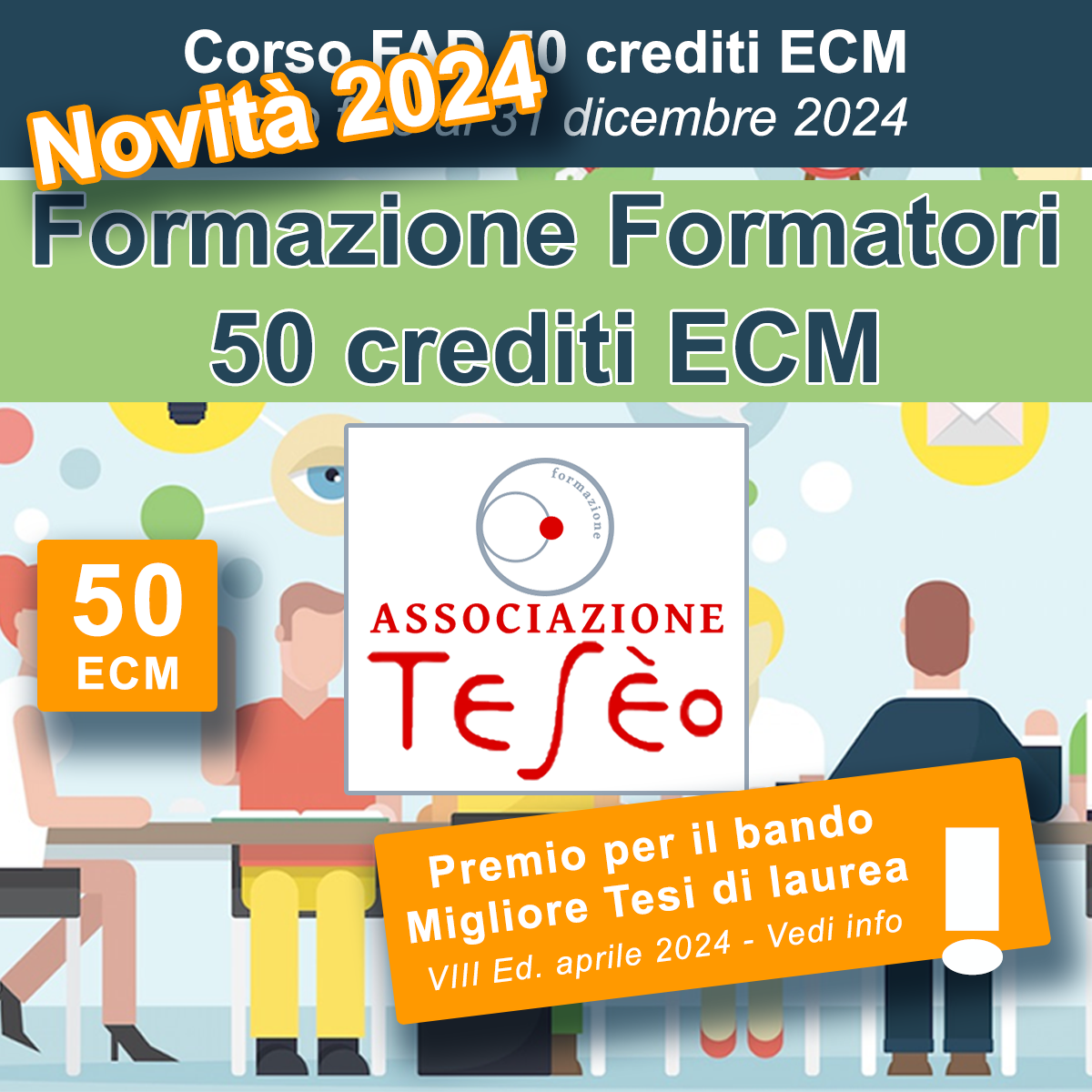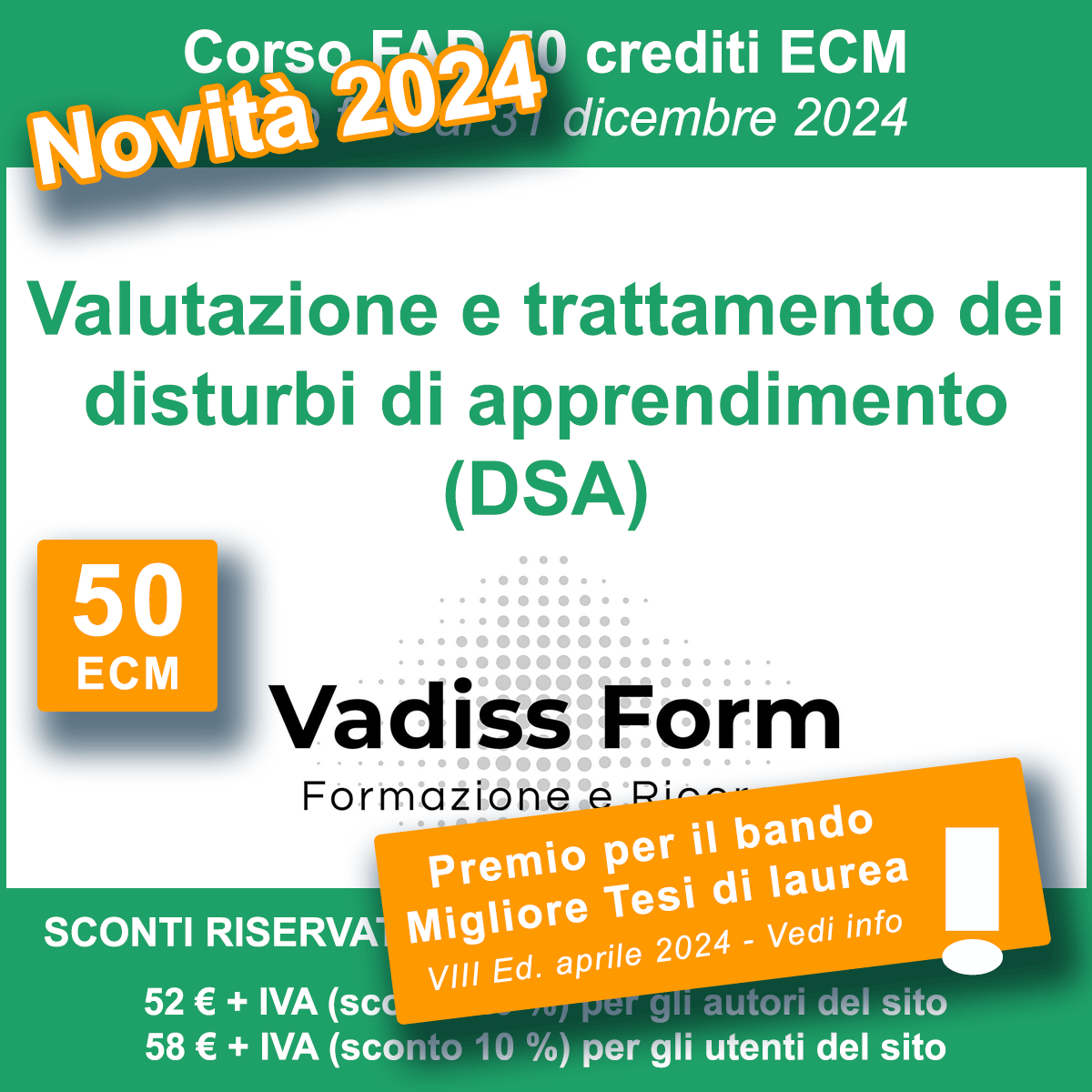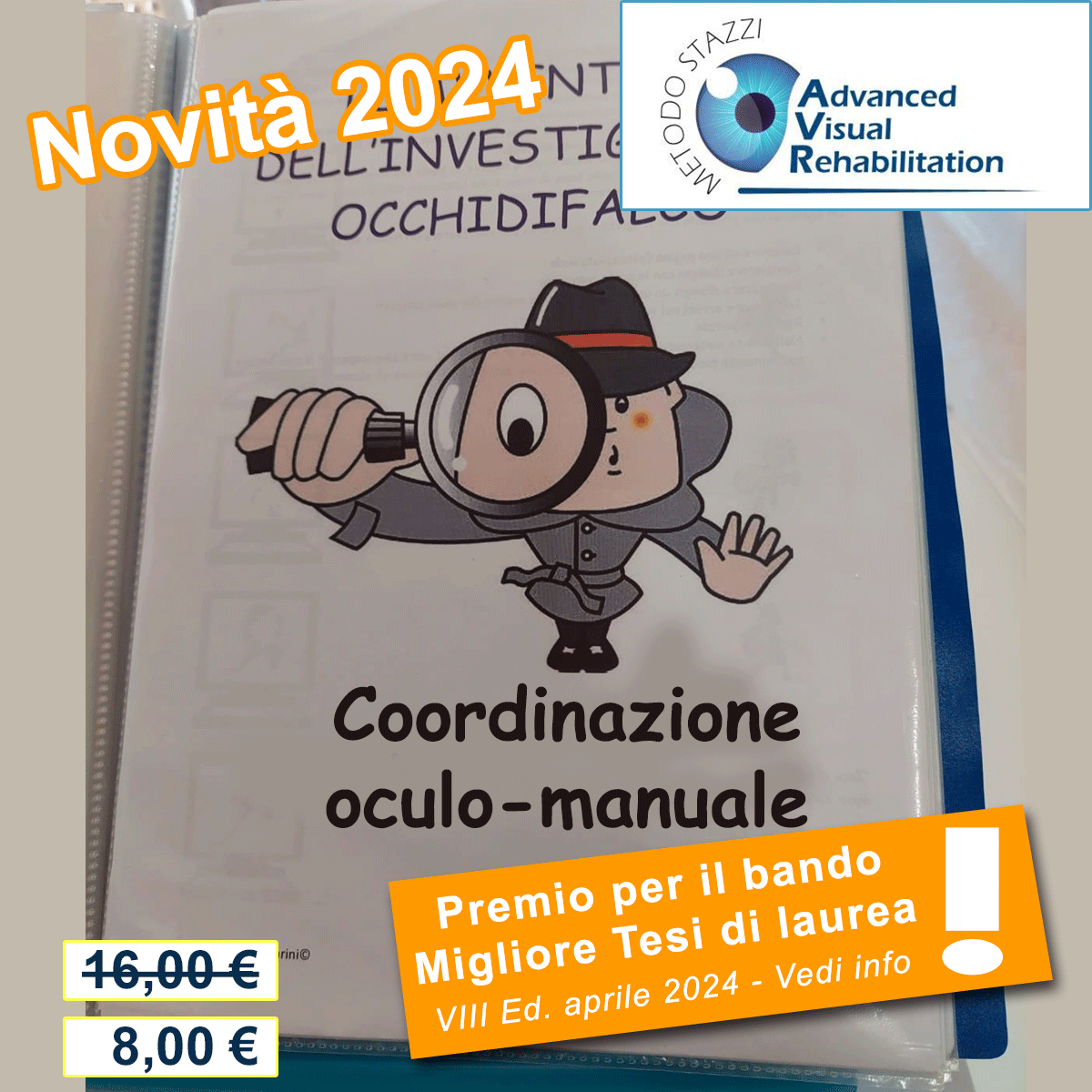BIBLIOGRAFIA e SITOGRAFIA - Il golf come supporto al training di terapia abilitativa in bambini con diagnosi di Disturbo dello Spettro Autistico
Alessandra Altamura
Visite: 2236
Bibliografia
- Bass M.M., Duchowny C.A., Llabre M.M. (2009), The effect of therapeutic horseback riding on social functioning in children with autism. Journal of Autism and Developmental Disorders, vol. 39, pp. 1261-1267.
- BISCHIECCHI, Autismo e psicoanalisi. Fondamenti e orientamenti terapeutici da Eugene
- Bleuler a Salomon Resnik. Edizioni del Cerro, Tirrenia, 2005.
- BISCHIECCHI, Autismo e psicoanalisi. Fondamenti e orientamenti terapeutici da Eugene
- Bleuler a Salomon Resnik. Edizioni del Cerro, Tirrenia, 2005.
- C. RICCI, A. ROMEO, D. BELLIFEMINE, G. CARRADORI, C. MAGUDDA, Il manuale ABA-VB, Trento, Erickson, 2014.
- C. SALVITTI, L’alunno autistico va a scuola, Pellegrini Editore, 2007
- Christopher Petrus, Sarah R. Adamson et al. (2009). Effects of exercise interventions on stereotypic behaviours in children with autism spectrum disorder. Physiotherapy Canada, Volume 60, Number 2, pag. 135-145.
- D. WILLIAMS, Il mio e il loro autismo, Armando Editore, Roma, 1998
- E. Bremer, M. Crozier, M. Lloyd (2016). A systematic review of the behavioural outcomes following exercise interventions for children and youth with autism spectrum disorder. Autism 20, 899-915.
- E. SCHOPLER, Apprendimento e cognizione nell’autismo, McGraw-Hill, Milano, 1998.
- F. MURATORI, La diagnosi precoce di autismo, Regione Toscana, 2009
- F. R. Volkmar, L. Wiesener, L’autismo dalla prima infanzia all’età adulta, Erickson, Trento, 2014.
- G. VIVANTI, La Mente Autistica, le risposte della ricerca scientifica al mistero dell’autismo. Omega Edizioni, Torino.
- J. M. CAFIERO, Comunicazione aumentativa e alternativ Strumenti e strategie per l’autismo e i deficit di comunicazione, Erickson, 2009.
- José Pedro Ferreira, Thaysa Ghiarone et al. (2019) Effects of Physical Exercise on the Stereotyped Behavior of Children with Autism Spectrum Disorders. Medicina (https://www.mdpi.com/journal/medicina), Volume 55, Numero 685, pag 1-18
- Kern J.K., Fletcher C.L., Garver C.R., Mehta J.A., Grannemann B.D., Knox K.R., Richardson T.A., Trivedi M.H. (2011), Prospective trial of equine-assisted activities in autism spectrum disorder. Alternative Therapies in Health and Medicine, vol. 17, pp. 14 20.
- L. COTTINI, Che cos’è l’autismo infantile, Carocci Editore S.p. A., Roma, 2002
- L. MAZZONE Sport, campus e inclusion Modelli di organizzazione e gestione per bambini e ragazzi con disturbi del neurosviluppo. Erickson, 2017.
- L. SURIAN, Autismo, indagini sullo sviluppo mentale, Editori Laterza, Bari, 2002
- L. SURIAN, L’autismo. Cos’è, come intervenire, cosa possono fare le famiglie, gli insegnanti, gli operatori, Il Mulino, Bologna, 2005.
- Lo sport come mediatore per la crescita della persona disabile, in L’integrazione scolastica e sociale, n. 6/4, 43 2007, p. 320, R Gianfagna, anche Progettare e promuovere Attività Motorie e Sportive Integrate nella formazione di persone con disabilità, in L’integrazione scolastica e sociale, n. 4/1, 2005, p. 39, L De Anna.
- Lucy E. Rosenblatt, Sasikanth Gorantla, Jodi A. Torres et al. (2011). Relaxation Response– Based Yoga Improves Functioning in Young Children with Autism: A Pilot Study. The journal of alternative and complementary medicine, Volume 17, Number 11, 2011, pp. 1029–1035.
- M. BORGHESE, Un bambino su cento ha l’autismo, Aldenia Edizioni, Fano, 2015
- M. D. AMY, Affrontare l’autismo, Armando Editori, Roma, 2000.
- M. LAMBIASE, Autismo e lobi frontali, Brescia, Vannini, 2004
- M. ZAPPELLA, “Gli strumenti per la diagnosi dei disturbi dello spettro autistico”, Autismo e disturbi dello sviluppo, vol. 7, n.1, 2009.
- M.P. Riccio, L. Croce et al. (2016). Autism Spectrum Disorders and sports activity: swimming to rescue as implementation of skills. Giornale della Neuropsichiatria dell’Età Evolutiva, Numero 36, pag. 55-61.
- Malin K. Hildebrandt et al. (2016). “We Dance and Find Each Other”: Effects of Dance/Movement Therapy on Negative Symptoms in Autism Spectrum Disorder. Behavioral Sciences, Volume 6, Numero 24; www.mdpi.com/journal/behavsci.
- McConkey, R. et al. (2013) “Promoting social inclusion through Unified Sports for youth with intellectual disabilities.” Journal of Intellectual Disability Research. Volume 57, numero 10, pag. 923-935.
- Mengxian Zhao & Shihui Chen (2018). The Effects of Structured Physical Activity Program on Social Interaction and Communication for Children with Autism. Hindawi BioMed Research International, Volume 2018, Article ID 1825046, 13 pages https://doi.org/10.1155/2018/1825046.
- Michelle Sowa & Ruud Meulenbroek (2012). Effects of physical exercise on Autism Spectrum Disorders: A meta-analysis. Research in Autism Spectrum Disorders Volume 6, Issue 1, January–March 2012, Pages 46-57.
- P. CRISPIANI, Lavorare con l’autismo, Bergamo, Edizioni Junior, 2001
- P. F. BIONDA, L’autismo infantil Prospettive teoriche e di intervento. Milano, Franco Angeli, 1987.
- P. VENUTI e A. BENTENUTO, Studi di Caso. Disturbi dello Spettro Autistico. Dal nido d’infanzia alla scuola primaria. Erickson, 2017.
- R. MILITERNI, Neuropsichiatria Infantile, quinta edizion Edizioni Idelson-Ginocchi, 2017.
- Robin L. Gabriels et al. (2015). Randomized Controlled Trial of Therapeutic Horseback
- Riding in Children and Adolescents With Autism Spectrum Disorder. J Am Acad Child Adolesc Psychiatry. Author manuscript; available in PMC 2016 July 01.
- Roslyn Malcolm, Stefan Ecksb & Martyn Pickersgill (2017), ‘It just opens up their world’: autism, empathy, and the therapeutic effects of equine interactions. Anthropology & medicine, Volume 25, Numero 2, Pag. 220–234.
- Russell Lang, Lynn Kern Koegel et al. Physical exercise and individual with autism spectrum disorder: a systematic review. Ricerca sui disturbi dello spettro autistico Volume 4, numero 4, pagine 565-576.
- S. ROGERS & G. DAWSON, G. VIVANTI (a cura di) Early Start Denver Model. Intervento precoce per l’autismo, Omega edizioni, 2010.
- S. VICARI, G. VALERI & L. FAVA, L’autismo dalla diagnosi al trattamento, Il Mulino, Bologna, 2012.
- Shim A.L., Peterson S., Turbes J. (2016), Incorporating a Pedalless Bicycle Curriculum into a K–5th Grade After-school Program to Improve Stability for ASD Children. Journal of Physical Education, Recreation & Dance, Vol.87, n. 3, pp.52-54.
- SINPIA, Linee guida per l’autismo. Diagnosi ed interventi, Erickson, 2005.
- T. GRANDIN, Il cervello autistico, Adelphi, Milano, 2014.
- T. PEETEERS, Autismo Infantil Orientamenti teorici e pratica educativa. Roma, Phoenix, 1998.
- Teri Todd & Greg Reid (2006). Increasing physical activity in individuals with Autism. Focus on autism and other developmental disabilities, volume 21, numero 3, pag. 167-176.
- FRITH, Autismo, la spiegazione di un enigma, Laterza editori, 2003.
Sitografia
- A. Cei (2016), Autismo, calcio integrato: sintesi della ricerca in http://www.albertocei.com/2016/11/autismo-calcio-integrato-sintesi-della-ricerca/ (visitato il 21 ottobre 2020).
- AutismService 2019 “Pivotal Response Training” in https://www.autismservice.it/it/Scientifico.html#PRT (visitato il 15 ottobre 2020).
| Indice |
| INTRODUZIONE |
| DISCUSSIONE E CONCLUSIONI |
| BIBLIOGRAFIA e SITOGRAFIA - ALLEGATI |
| Tesi di Laurea di: Alessandra ALTAMURA |
































